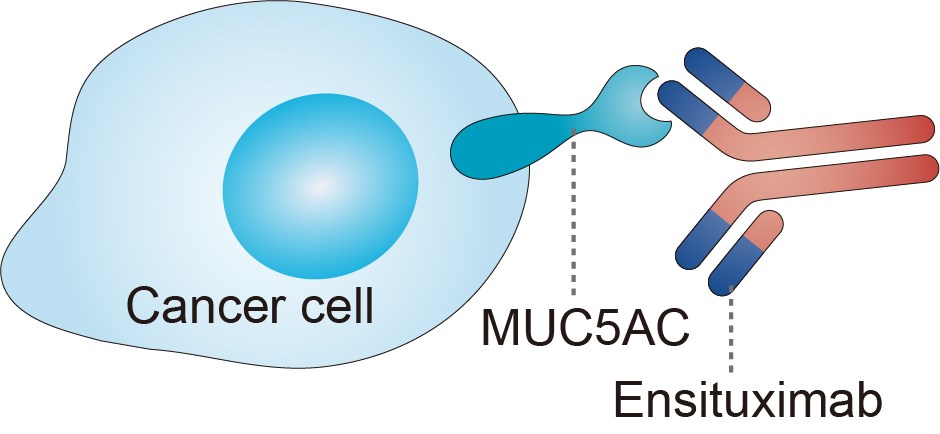Ensituximab Overview
Introduction of Ensituximab
Ensituximab (also known as NEO-102 and NPC-1C) is a novel chimeric IgG1 monoclonal antibody (mAb) developed as a biological treatment for patients with pancreatic and colorectal cancers. The target of ensituximab is uncertain and is described as "human colorectal and pancreatic carcinoma-associated antigens", a set of tumor antigens isolated from human cancers. It was reported that the target of the antibody might be Mucin 5AC (MUC5AC). Ensituximab was one of several antibodies raised against an allogeneic colorectal cancer vaccine that had previously been tested in human clinical trials in the United States and not derived from MUC5AC antigen. This original vaccine was screened from 79 patients with various stages of colon cancer whose tumor membranes fractions were pooled, separated by HPLC, and tested for delayed type hypersensitivity. The component that produced a strong DTH response upon screening was selected as the original vaccine and used in clinical trials. Results of that preliminary study with the vaccine in patients with refractory colorectal cancer revealed clinical benefits that correlated directly with patients developing IgG responses against the vaccine. This formed the rationale for the vaccine to screen antibodies for sensitivity, specificity and anti-tumor function against colon cancer. Ensituximab was the first of 3 antibodies identified that met these criteria. Although unknown at the time of drug discovery, through protein purification and mass spectroscopy the homologous sequence to MUC5AC was identified as the target for this compound. Preclinical studies demonstrated that ensituximab binds specifically to a novel MUC5AC-related antigen and directs antibody-dependent cellular cytotoxicity (ADCC) in the presence of normal human peripheral blood mononuclear cells (PBMCs). Additionally, antitumor efficacy was noted in preclinical pancreatic and colon cancer tumor xenograft models.
Mechanism of Action of Ensituximab
MUC5AC is a member of the mucin gene family and involves a carbohydrate structure on the amino acid backbone of a large (~100kDa) heavily glycosylated protein. The MUC5AC gene has been reported to be expressed mainly on the surface epithelium of normal gastric mucosa and normal airway epithelium. MUC5AC is found in the GI tract and is preferentially expressed on colon and pancreatic cancer cells. MUC5AC is predominantly expressed in the respiratory tract, in inflammatory conditions such as cystic fibrosis and chronic obstructive pulmonary disease (COPD), producing increase levels of mucous production. Whereas MUC5AC expression has been demonstrated in fetal and pre-cancerous colonic mucosa, it is absent in normal adult colon. Unlike the inflammatory conditions where MUC5AC is heavily glycosylated, in pancreas and colon tumors, MUC5AC is aberrantly glycosylated. Ensituximab can therefore discriminate between the native MUC5AC and the aberrantly glycosylate, NPC-1, variant of MUC5AC in tumors imparting tumor selectivity, which is exploited in this therapeutic strategy.
 Fig.1 Mechanism of Action of Ensituximab
Fig.1 Mechanism of Action of Ensituximab
For research use only. Not intended for any clinical use.
This site is protected by reCAPTCHA and the Google Privacy Policy and Terms of Service apply.



